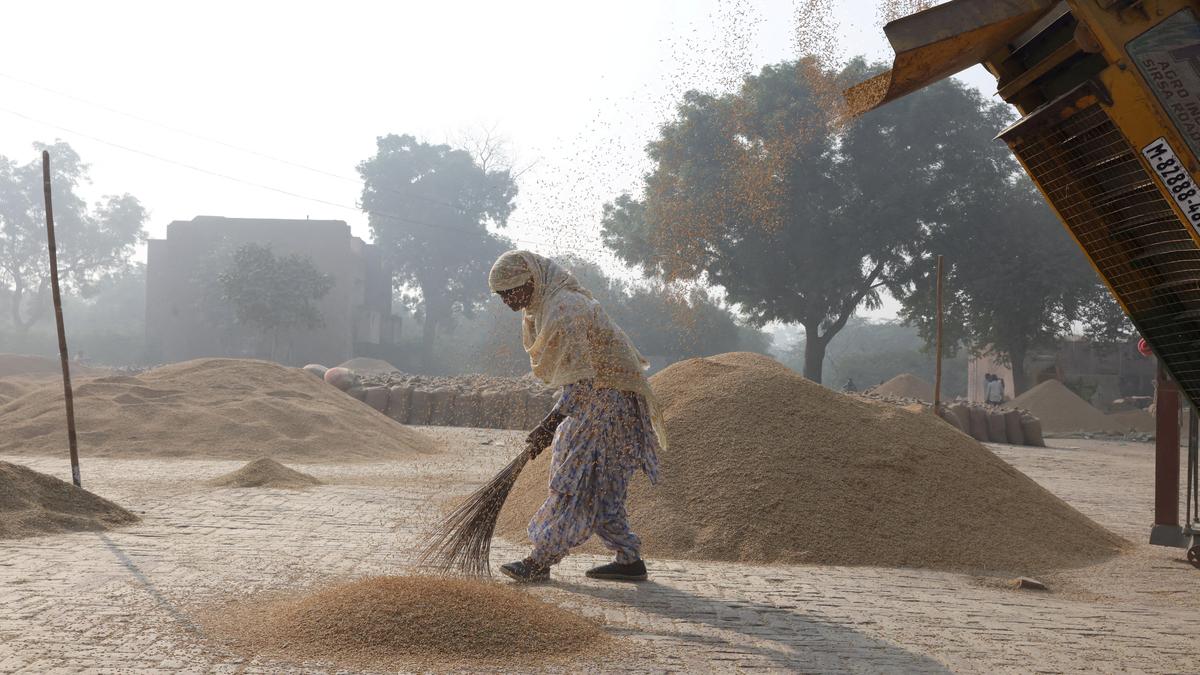What’s in today’s article?
- Why in News?
- What is the Indian Rice Congress?
- What is the Significance of Rice in India and How is it Grown?
- News Summary with respect to the President’s Address at the 2nd Indian Rice Congress
Why in News?
Addressing the 2nd Indian Rice Congress at National Rice Research Institute (NRRI), Cuttack, the Indian President urged scientists to find a middle path – preserving and conserving traditional varieties of rice and maintaining ecological balance.
What is the Indian Rice Congress?
- The Congress is held every two years to provide a robust global platform for all the stakeholders i.e., researchers, industries, policy makers, extension workers, students and farmers.
- It is organised by the Association of Rice Research Workers (ARRW) at ICAR-NRRI, Cuttack, to discuss national and international developments in rice science.
- In that series, the 2nd Congress will be held on the topic “Transforming Rice Research: Learning from Recent Scientific Developments and Global Food Crisis”.
H1: What is the Significance of Rice in India and How is it Grown?
Image Caption: Top Rice Producers in India
- Rice (Oryza sativa) has a major role in diet, economy, employment, culture and history, and this staple food (of eastern and southern India) plays a pivotal role in the food and livelihood security of people.
- Rice is a nutritional staple food which provides instant energy as its most important component is carbohydrate (starch). On the other hand, it is poor in nitrogenous substances and fat content or lipids.
- It is fundamentally a kharif crop in India and demands a temperature of around 25 degrees Celsius and above, and rainfall of more than 100 cm.
- Rice (or paddy) production in India (~120 million tons in FY 2020-21) is an important part of the national economy, as India is the world’s second-largest producer and the largest exporter of rice.
- The Indian rice varieties cultivated widely are Basmati, Joha, Jyothi, Navara, Ponni, Pusa, Sona Masuri, Jaya, Kalajiri (aromatic), Boli, Palakkad Matta, etc.
- There are about four ways of rice cultivation – broadcasting, drilling, transplantation and the Japanese method.
- To enhance resource use efficiency and improve yields, two new technologies for paddy cultivation are designed: System of Rice Intensification (SRI) and Direct Seeded Rice (DSR).
- Even as rice has broken new ground, there are places where traditional varieties are facing challenges.
News Summary: President’s Address at the 2nd Indian Rice Congress
- Rice is rightly called the grain of life and it arguably feeds more people than any comparable food grain, especially in Asia.
- Every region of India owns a unique rice of its own with a distinct taste.
- In the last century, as the irrigation facilities expanded, rice came to be grown in new places and found new consumers.
- Such a shift is not good for the water regime of some regions that face severe water shortage, as paddy requires a high amount of water.
- Due to climate change, droughts, floods and cyclones are now more frequent making rice cultivation more vulnerable.
- Another challenge is to save the soil from excessive use of fertilisers which are called necessary for not so modern rice cultivation.
- The scientists are actively seeking solutions by collecting, identifying and characterising unique rice germplasm that can survive cultivation challenges.
- Also, traditional rice growers from tribal communities of Odisha have helped conserve unique genetic resources of rice for ages.
- Large section of low-income groups depends on rice which is their only source of daily nutrition. Therefore, a mixture of protein, vitamin are essential micronutrients that can help combat malnutrition.
- The NRRI has developed India’s first high protein rice called CR-Dhan 310 which will help improve country’s nutrition profile and it has also released a high-zinc called CR Dhan 315.
- The development of such bio-fortified varieties is an ideal example of science in the service of society and more and more such efforts will be needed to support an increasing population.
Q1) What is System of Rice Intensification?
The System of Rice Intensification (SRI) initiative involves transplanting young single seedlings wide apart instead of the conventional method of transplanting multiple mature seedlings close together. SRI does not depend on continuous flooding of rice fields; it only requires the fields to be wet.
Q2) What is the advantage of direct seeded rice?
Direct Seeded Rice offers certain advantages viz., it saves labour, requires less water, less drudgery, early crop maturity, low production cost, better soil physical conditions for following crops and less methane emission, provides better option to be the best fit in different cropping systems.
Source: President for conserving traditional varieties of rice | Farmer.gov.in
Last updated on January, 2026
→ Check out the latest UPSC Syllabus 2026 here.
→ Join Vajiram & Ravi’s Interview Guidance Programme for expert help to crack your final UPSC stage.
→ UPSC Mains Result 2025 is now out.
→ UPSC Notification 2026 is scheduled to be released on January 14, 2026.
→ UPSC Calendar 2026 has been released.
→ UPSC Prelims 2026 will be conducted on 24th May, 2026 & UPSC Mains 2026 will be conducted on 21st August 2026.
→ The UPSC Selection Process is of 3 stages-Prelims, Mains and Interview.
→ Prepare effectively with Vajiram & Ravi’s UPSC Prelims Test Series 2026 featuring full-length mock tests, detailed solutions, and performance analysis.
→ Enroll in Vajiram & Ravi’s UPSC Mains Test Series 2026 for structured answer writing practice, expert evaluation, and exam-oriented feedback.
→ Join Vajiram & Ravi’s Best UPSC Mentorship Program for personalized guidance, strategy planning, and one-to-one support from experienced mentors.
→ UPSC Result 2024 is released with latest UPSC Marksheet 2024. Check Now!
→ UPSC Toppers List 2024 is released now. Shakti Dubey is UPSC AIR 1 2024 Topper.
→ Also check Best UPSC Coaching in India

















